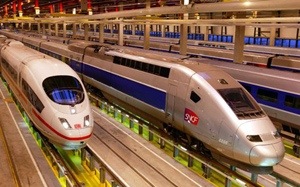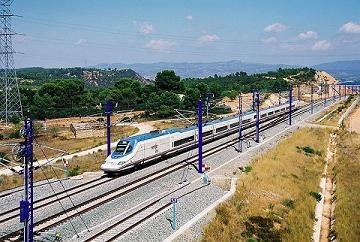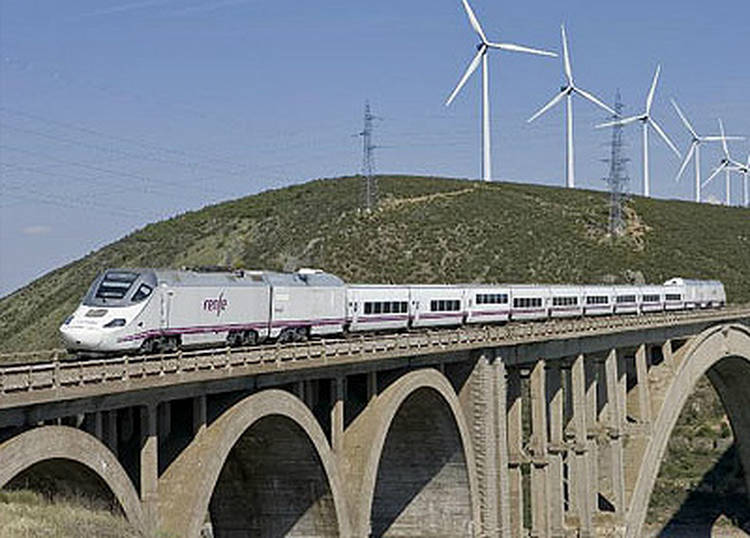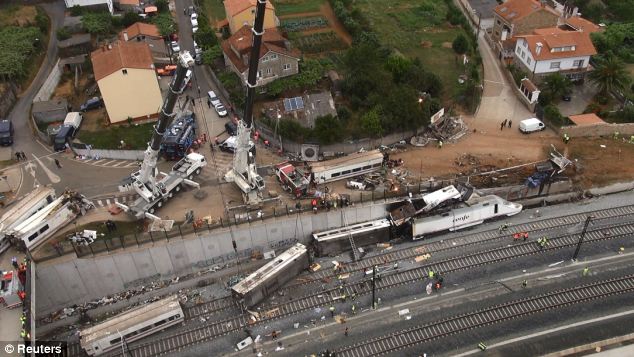I have always been a huge fan of trains and fascinated by the high speed options now in existence across the globe. The long term high speed rail operators of the world: France’s SNCF and Japan’s National Railways have enjoyed an excellent safety record.For example the JNR Shinkansen service has had no fatalities caused by derailments or collisions in its almost fifty years of service whilst carrying seven billion passengers. The French TGV has not recorded a single fatality due to accident while running at high speed over the last 32 years.
The rail accident that is the world’s worst occurred in Eschede, Germany in June 1998 when an ICE derailed at 200km (120mph) hitting and undermining a road bridge. As a result of that accident, 101 people died and 88 injuries were sustained. This, however, was the only major ICE rail accident with fatalities in Germany in 22 years of high speed operation and with over 500 million passengers carried. The fatal train crash that occurred last Wednesday July 24 in northwestern Spain is sadly in the record books as the world’s second worst high speed accident.
High speed rail is relatively new to Spain but has been strongly embraced by the country. There are three types of High Speed Trains in operation in Spain:
- Altaria – trains which travel on conventional tracks at speeds of up to 200km/h (125mph) using a tilting mechanism to take corners at faster speeds
- Alvia– trains which run on both conventional and high speed tracks at speeds of up to 250km/h (155mph). They run on standard size and the wider gauge tracks used in parts of Spain
- The Superfast AVE (Alta Velocidad Española -“Spanish High Speed”) which runs at 300km/h (180mph) on dedicated high speed tracks. The Madrid to Barcelona AVE line inaugurated in February 2008 is currently one of the world’s fastest long-distance trains in commercial operation with non-stop trains covering the 621 km (386 mile) route between the two cities in just 2 hours 38 minutes.
The Class S730 passenger train operated by RENFE was carrying 218 passengers en route from Madrid to Ferrol, in north-western Spain.
The Alvia Train had received a full maintenance check on the morning of the crash. The accident occurred when the train entered a bend in the line, travelling at over twice the 80 kilometres per hour (50 mph) posted speed limit. When Alvia trains run on high-speed routes, a sophisticated security system exists automatically slows down trains that are going too fast. On the conventional tracks, drivers must heed warning systems to reduce speed. That section of the route is not a high speed line and the station was not far away. It was up to the driver to respond to prompts to slow down.
The derailment was recorded on a track-side camera, which shows all thirteen vehicles derailing and four overturning.
It is not immediatly clear as to why the train was going that fast. On this service, RENFE guarantees arrival within twenty minutes of the advertised time and offers a 50% refund if the train is delayed further. The train on this day was five minutes behind schedule so there was not great pressure to make up time. Media reported that the driver had previously boasted on Facebook that he had driven at 200km/h (124mph) saying “I’m at the limit and I can’t go any faster or they will give me a fine.” His Facebook page has since been blocked.
The driver has now been charged with 79 counts of homicide. According to media reports, in a closed-door hearing before a Judge, he admitted taking the curve too fast, blaming it on a momentary lapse. The judge set the following conditions of release: the driver must check in regularly with the court, surrender his passport and not drive trains.
The crash may disqualify rail operator RENFE from competing in Brazil’s upcoming US$16bn Rio-São Paulo-Campinas bullet train project. The tender documents published in Brazil state: “All bidders must submit a document stating that they have not participated in a highspeed train project which has recorded a fatal accident in the past five years, which resulted from faulty operation of the train system,”
Spain was in official mourning for three days and the Royal family visited the site. My full sympathies to all impacted by this terrible tragedy.
Related Posts
Spanish Train Crash Information Contacts







This was not a high-speed rail line, nor was it a high-speed train. This was an ordinary train on an ordinary line. The line did not have the latest signaling technology which would have automatically stopped a train exceeding the track speed limit.
The German Eschede crash was also on an ordinary line, though it was a high speed trainset running on the ordinary line. In that case there was a manufacturing flaw on the trains wheels which had caused a wheel to come apart causing the derailment. What made that accident deadly, similar to the recent accident, is that there was a concrete embankment shortly after the point of derailment.
True high speed lines have a great deal more safety features then either of these tragic accidents. Despite these accidents, travel by rail is far safer than by car or bus
While experts will always argue, it is not ridiculous to assert that train travel is notably safer than air travel but by all means choose your own statistics.
It is often difficult to legislate for an idiot in charge, and time may prove spanish rail and korean air equally susceptible.
Rail well executed remains incredibly safe, comfortable, efficient and convenient and again choose your own statistics but arguably the best intercity mode for any journey under about 500 miles.
I would rather get on a spanish train than a 787 where I have not obviously ridicolous concerns that boeing may be unable to engineer a humid, electric plastic airplane – but this is a long debate that only the lense of history will resolve.
Thanks Carl. The train is marketed as one of Spain’s High speed trains. The line is indeed an ordinary line.
Anyway to get any frequent flyer miles on RENFE? The Madrid-Barcelona AVE could fit well in a future trip.